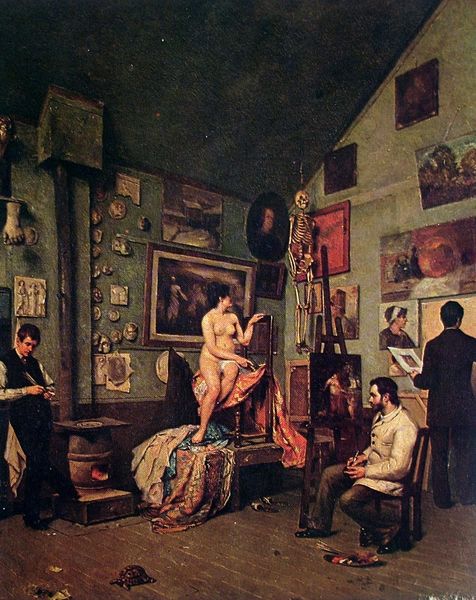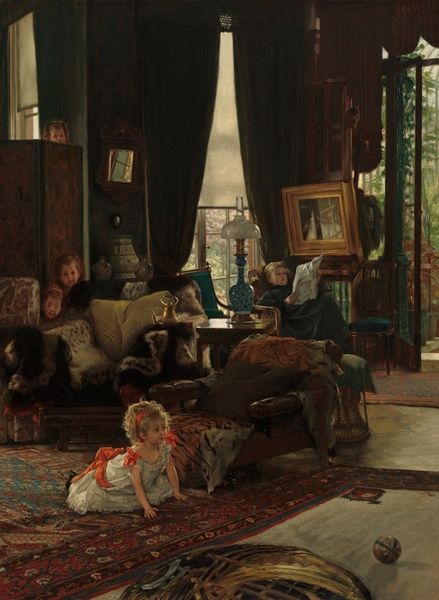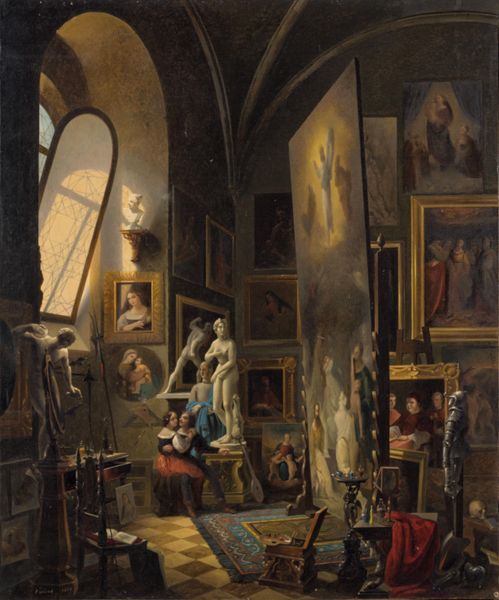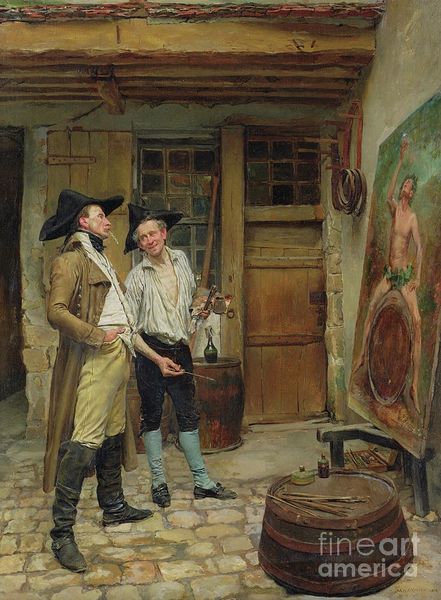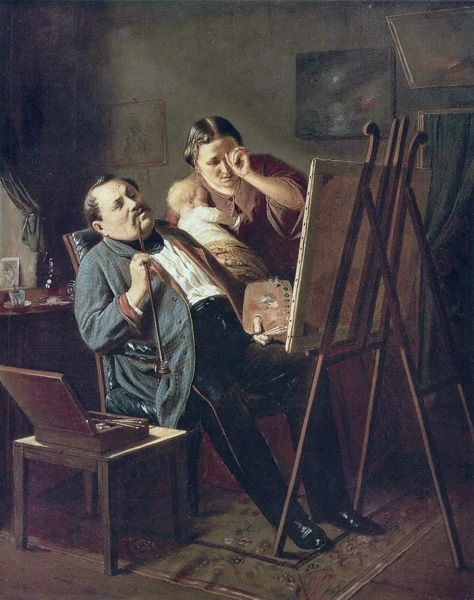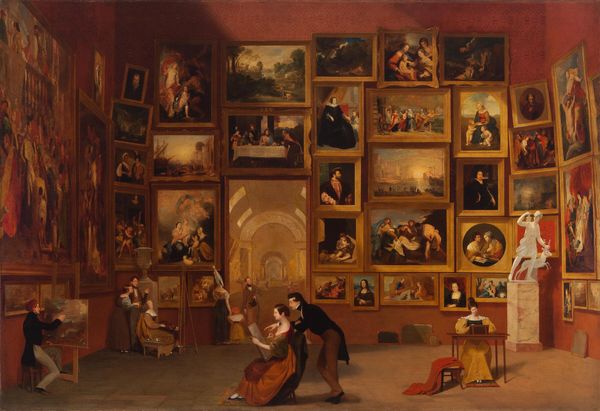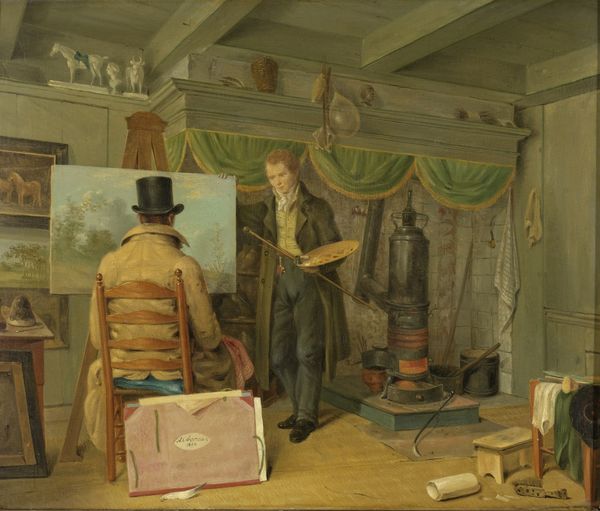
Copyright: Public Domain: Artvee
Curator: Editor: Here we have Julius Leblanc Stewart's "In The Artist's Studio" from 1875, created with oil paint. It seems like a very complex, staged scene, full of different textures and details, with what appears to be the artist himself painting at an easel while a scene unfolds in the foreground. How do you approach a work like this? Curator: Well, for me, the appeal lies in the depiction of the studio as a site of production, rather than just a space for inspiration. Look at the objects – the armor on the floor, the antique furniture. They’re not just props, but raw materials. How does Stewart engage with these objects and integrate them into his practice? Editor: That's interesting. So, you see the studio as more than just a backdrop? The focus is more on the tools and setting for creation? Curator: Exactly! The painting becomes a document of artistic labor, an inquiry into how art is *made*. Notice the interplay between the figures and objects, a staged tableau, seemingly frozen in time. What does the materiality of those costumes communicate to us, their production and ultimate consumption? Is Stewart showing us that these are costumes? And what relationship exists between the real artist, the figures posing, and the resulting picture on the canvas? Editor: I see your point. By showcasing the 'ingredients' of the painting—costumes, props, and even the act of painting itself— Stewart highlights the constructed nature of art. It almost makes you question what's 'real' within the painting. Curator: Precisely. He blurs the lines between reality and artifice. Consider how the impasto technique, particularly in the highlights, draws attention to the physical properties of the paint itself, further emphasizing materiality. Editor: It’s a fascinating perspective, seeing it as a focus on materials and labor, rather than just the subject matter being depicted. Thanks for showing me a different way to engage with this work. Curator: My pleasure. Thinking about the art as made not found shifts your perception and interpretation of the piece, doesn't it?
Comments
No comments
Be the first to comment and join the conversation on the ultimate creative platform.
